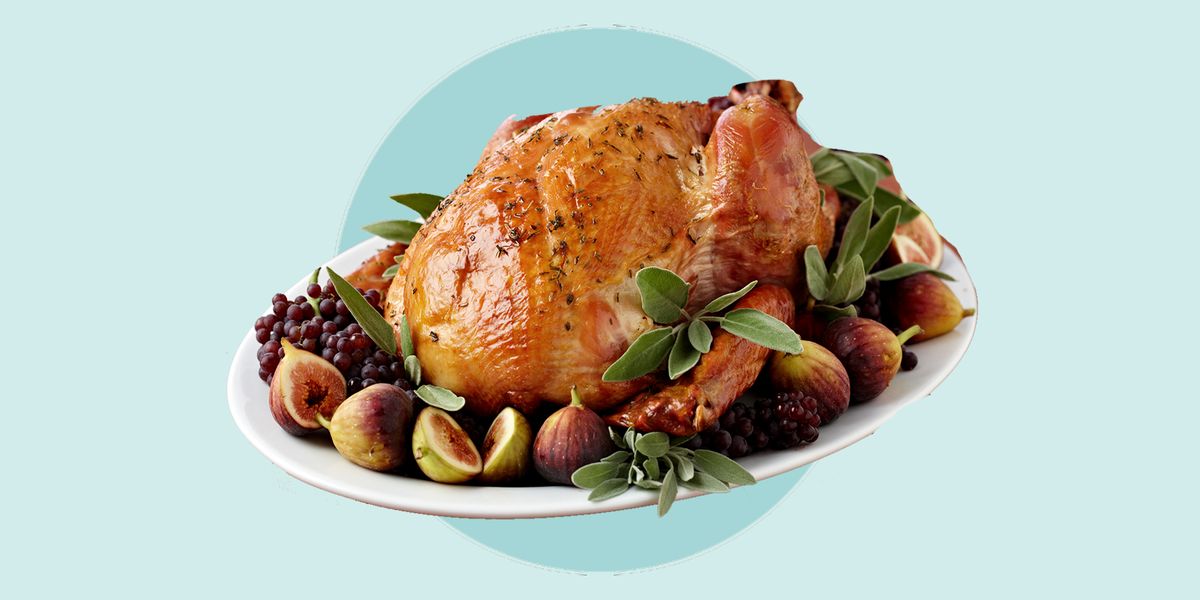- Turkey producers in key supply chain areas have indicated that there will be a shortage of fresh turkeys below 20 lbs this year, according to multiple reports.
- Due to a steep decline in demand for larger turkeys, as well as increased labor costs and other industry disruptions, farmers may not be able to produce enough fresh turkeys to meet the trend of smaller holiday meals.
- Food experts say the best way to ensure your family will be able to cook and enjoy a smaller turkey this year is to buy a frozen variety, weeks to months in advance.
Turkey remained a staple of Thanksgiving and many holidays during the pandemic, even if families couldn’t all gather as they had in previous years. And because dinner tables were tighter and more intimate than ever during the holiday season, many Americans opted for a much more petite turkey than before — meaning the demand for smaller turkeys is higher than experts have ever seen it. And while COVID-19 vaccines may enable more family members to reunite over the holiday season safely (albeit carefully!) this year, it’s unclear if the trend of roasting a smaller turkey is here to stay.
That’s why poultry experts have sounded the alarm about the current state of the production chain for turkey, even though Thanksgiving and the other December holidays are months away. According to this New York Post report that’s been widely shared, a broker for Shady Brook Farms — a crucial turkey supplier for the entire nation — informed retailers and other food purveyors that the pandemic has continued to plague the producers due to less demand for larger turkeys, coupled with reduced labor and increased costs.
In particular, fresh, whole turkeys under 16 lbs were singled out in the report, with claims from turkey farmers indicating that there would be in shortage this year. And a Butterball spokesperson told NBC’s TODAY that even smaller frozen turkeys “could be harder to find in stores this November.”
Turkeys may not be the only item that’s harder to find for your holiday spread, either, as food industry experts within the International Food Information Council (IFIC) tells Good Housekeeping that the pandemic has put strain on other areas of the production process as well.
Tamika Sims, Ph.D., senior director of Food Technology Communications at the IFIC says officials at the United States Department of Agriculture maintain there isn’t a shortage of any one item currently — but inventory is widely impacted compared to pre-pandemic levels.
“Even in the case of seasonal items that have specific popularity, stores may not be able to offer as many options in the same time frame you may have been accustomed to the in past,” she explains. “[Federal] processing and transport are not currently reporting wide-spread supply chain disruptions — so while options may be a bit different this year as far as sizes of turkey or brands available, there will likely still be many choices available.”
This content is imported from Twitter. You may be able to find the same content in another format, or you may be able to find more information, at their web site.
While turkeys of a larger size, particularly those over 20 lbs, could be readily available, home cooks may dodge the challenge as there’s more risk when it comes to cooking. Thawing a turkey requires up to 24 hours per 4 lbs in the refrigerator, two hours in cold water for every 2 lbs, or plenty of turns in a microwave defroster, Sims explains. For most, this is much more of a hassle than cooking a smaller, fresh turkey that may be otherwise unavailable.
There aren’t major nutritional differences between fresh and frozen birds, some home cooks may be additionally hesitant to frozen options due to processing, particularly in the amount of extra sodium it may contain, explains Kris Sollid, MS, RD, IFIC’s senior director of nutrition communications.
“Cost and preparation are the two main non-nutritional differences between fresh and frozen turkeys,” he says, adding that fresh turkey is often more expensive than frozen turkey on the whole, per USDA data. That price difference will only continue to widen due to shortages this year.
While it’s too soon to tell whether or not all turkey producers will be short on providing petite fresh turkeys this year, one thing is indeed clear — if you’re hoping to enjoy a smaller turkey, the time to buy is sooner rather than later. “A frozen turkey can be stored in your freezer for up to one year before it begins to lose quality, so they can be purchased much further in advance than a fresh option,” Sollid advises.
We’ll continue to update this story with more information as it becomes available.
This content is imported from {embed-name}. You may be able to find the same content in another format, or you may be able to find more information, at their web site.
This content is created and maintained by a third party, and imported onto this page to help users provide their email addresses. You may be able to find more information about this and similar content at piano.io

